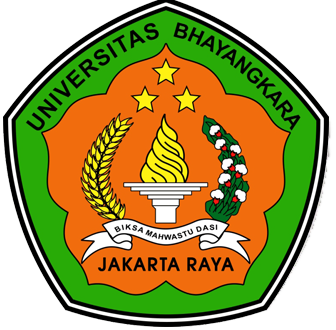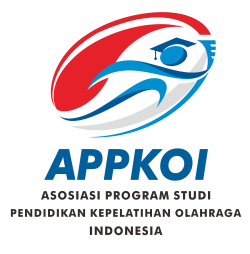Development of Interactive Media for Physical Education, Sports, and Health Subjects in Junior High School
DOI:
https://doi.org/10.31599/dndwm640Keywords:
Interactive Media, Physical Education, LearningAbstract
Learning physical education, sports and health at SMP Negeri 3 Wates can be said to be less effective due to several factors. First, the limited availability of textbooks which is one of the students' learning resources. As a result, during physical education lessons, students only do practical activities in the field. The purpose of this study is to determine students' understanding of physical education material, which leads to confusion during written exams. This research and development model of multimedia learning for Physical Education, Sports, and Health for grade VII students in junior high school uses a Research and Development (R&D) approach, using the multimedia development model developed by Borg & Gall. Borg and Gall's research and development process involves 10 steps, of which researchers will apply 9 steps, including: (1) Potential and problems, (2) Data collection, (3) Product design, (4) Design validation, (5) Design revision, (6) Product trial, (7) Design revision, (8) Usage trial, and (9) Product revision. Based on the conclusions of this study, the development of Android-based interactive media is considered valid, with 75% validation from learning experts and 75% validation from media experts, signifying the validation of Android-based interactive media. Android-based interactive media is considered effective for use in learning, because it obtained a percentage of 80% in the limited trial and 86% in the broad trial.
Downloads
References
Da’i, M., Ramadhan, N., & Rohman, A. (2023). Comparison of Physical Fitness Levels between Boarding School Students based on Islamic Boarding School and Formal School Students. Journal Coaching Education Sports, 4(1), 141–152. https://doi.org/10.31599/jces.v4i1.187 6
Dewi, R. P., & Sepriadi. (2021). Minat Siswa SMP Terhadap Pembelajaran PJOK Secara Daring Pada Masa New Normal Junior High School Students Interest in Online Physical Education Learning During the New Normal Period. Physical Activity Journal, 2(2), 205–2015. https://doi.org/10.20884/1.paju.2021. 2.2.3988 Abstrak
Dumiyanto, E. P., Baqiyudin, G., & Basri, M. A. (2021). Reward and punishment in Online Learning PJOK of The Covid-19 Pandemic on Students of Karangwinongan State School, Mojoagung. Widyagogik, 9(1), 34–47. https://doi.org/10.21107/widyagogik. v9i1.10980
Hambali, S. (2022). Anxiety Review of West Java ’ s Artistic Gymnastics Athletes. 179–185.
Haryanto, T. S., Dwiyogo, W. D., & Sulistyorini. (2016). Pengembangan Pembelajaran Permainan Bolavoli Menggunakan Media Interaktif Di SMP Negeri 6 Kabupaten Situbondo. Jurnal Pendidikan Jasmani, 25(1), 1– 10. https://doi.org/10.17977/pj.v25i1.4908
Kadar, K., Wahab, R., & Fatonah, S. (2020). Community Based Early Childhood Education Management. In Istawa : jurnal pendidikan Islam. Universitas Muhammadiyah Ponorogo. https://doi.org/10.24269/ijpi.v5i2.2667
Munir. (2020). Konsep & Aplikasi Dalam Pendidikan. In Alfabeta, CV. (Vol. 58, Issue 12).
Mustafa, P. S., & Sugiharto, S. (2020). Keterampilan Motorik Pada Pendidikan Jasmani Meningkatkan Pembelajaran Gerak Seumur Hidup. Sporta Saintika, 5(2), 199–218. https://doi.org/10.24036/sporta.v5i2.133
Mustafa, P. S., Winarno, M. E., & Supriyadi. (2019). Penilaian Pendidikan Jasmani, Olahraga, dan Kesehatan pada Sekolah Menengah Pertama Negeri Kota Malang. Jurnal Pendidikan: Teori, Penelitian, Dan Pengembangan, 4(10), 1364–1379. https://doi.org/10.17977/jptpp.v4i10.1 2845
Sinulingga, A., Bangun, S. Y ., & Wicaksono. (2023). Is Scientific Learning Better Than Conventional Learning on Creativity and Student Learning Outcomes ? Journal Coaching Education Sports, 4(1), 45– 58. https://doi.org/10.31599/jces.v4i1.190 3
Sinulingga, A., Pasaribu, A. M. N., Bangun, S. Y., Ningrum, D. T. M., & Mahyudi, Y . V . (2023). Plyometric Exercise and Speed on the Power of Sabit Kick in Pencak Silat. International Journal of Human Movement and Sports Sciences, 11(3), 591–597. https://doi.org/10.13189/saj.2023.110 311
Tegeh, I. M., Jampel, I. N., & Pudjawan, K. (2014). Model Penelitian Pengembangan. Graha Ilmu.
Thabiso, S., Tumelo, S., & Juanita, M. (2023). Adherence to Sports Nutrition Guidelines by Tennis Athletes Team Representing the University of Limpopo. Journal Coaching Education Sports, 4(1), 121–139. https://doi.org/10.31599/jces.v1i2.1844
Wiguno, L. T. H., Kurniawan, A. W., Wahyudi, H., & Aqsha, A. H. (2023). Development of Interactive Multimedia-Based Physical Fitness Learning Media in Junior High School. JOSSAE (Journal of Sport Science and Education), 8(1), 54–68. https://doi.org/10.26740/jossae.v8n1. p54-68
Downloads
Published
Issue
Section
License
Copyright (c) 2023 Renno Jati Kusuma, Atrup, Budiman Agung Pratama, Dicky Edwar Daulay

This work is licensed under a Creative Commons Attribution 4.0 International License.






.png)







